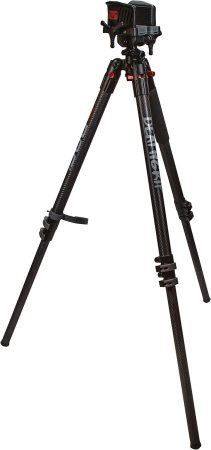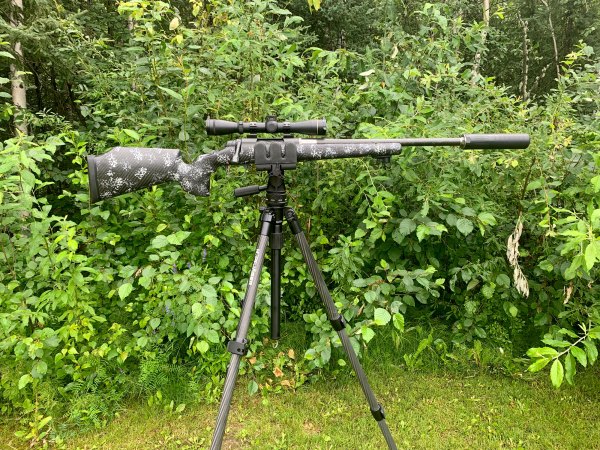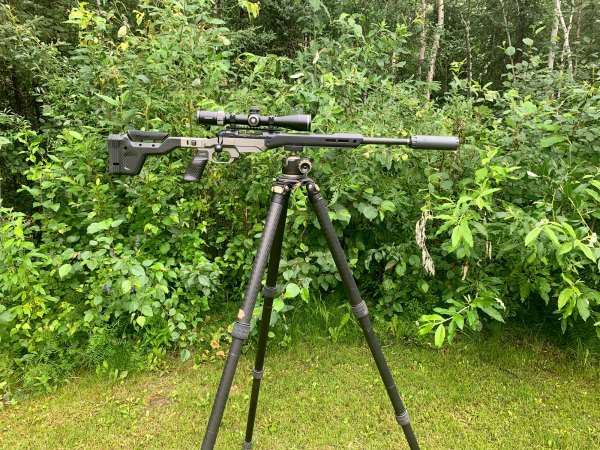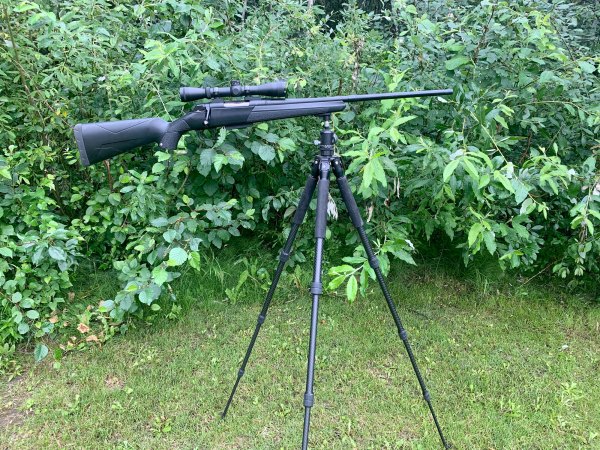The shooting tripod is perhaps one of the most underrated pieces of gear that a modern hunter can bring to the field. Today we benefit from numerous advances in hunting technology and manufacturing — in everything from the bullets we shoot to the stoves we use to boil our water at the end of the day. Our equipment and our methods have become better in every way, including how we stabilize our rifle for a shot. It wasn’t long ago that even bipods on rifles were a fatuous novelty, and a woodsman’s only choices were to improvise a hasty rest or pinball bullets through the trees with a desperate offhand effort.
There is certainly a time and place to apply the commendable skill of offhand shooting, but we’ve since come out of the dark ages. Many types of shooting rests — specifically tripods — have evolved dramatically. The modern shooting tripod is a platform that offers versatility and stability to help make just about any hunter more confident and effective when it’s time to take the shot.
Evolution of the Shooting Tripod
The shooting tripod as we know it is relatively new; it’s a product of rapid development during the Global War on Terror and the rise of competitive PRS, NRL, and sniper matches. As a kid in the 1990s, I never saw anyone using a tripod as a shooting rest. Bipods were becoming more mainstream in my teenage years and when my dad and I got into coyote calling, we found that shooting sticks or a sitting-height bipod provided better stability and surer shots than we could ever manage before. It’s that same realization — that support and stability facilitate better accuracy — that drove the development of the shooting tripod.
You Can’t Always Go Prone
My first exposure to the concept of a shooting tripod was in 2009, when my buddy Richard Gilbert was giving me pointers from his time as a Scout Sniper in the Marine Corps. Bipods were mainstream by then and I’d spent five or six years with my arm wrapped in a service rifle sling at that point. It simply hadn’t occurred to me to use a tripod.
“There are lots of shots you might have to take without the ability to go prone,” Gilbert told me.
He then described how they would take a photographer’s tripod and make what he called a HOG saddle (H.O.G. is the USMC acronym for “hunter of gunmen”). As I remember his explanation, they would cut a short piece of PVC pipe in half, line it with foam padding, and mount that “saddle” to the top of the tripod in which the shooter could now nestle and balance their sniper rifle. A few years later, the much-refined clamp-style HOG Saddle became standard-issue and quickly caught on in the civilian market, too.
Recent long-range precision shooting and competition have also driven both the gear and technique sides of the shooting tripod. The Swiss ARCA system — standard mounting dovetail for tripods has even become more commonly incorporated into production rifles, and now there are tripods for just about any shooting application.
Variants of the Shooting Tripod
There are types, styles, and sizes of shooting tripods that fit an abundance of applications. Generally though, hunters will choose one of these three.
HOG Saddle or Clamp Shooting Tripod
The HOG Saddle shooting tripod was the first to become really popular among hunters, and it’s still going strong. The defining feature of the HOG Saddle and its many copies is an adjustable padded clamp that grasps the stock of the rifle — usually at the balance point or just forward of the magazine. The vise-jaw-type clamp holds the rifle securely, helping to reduce shaking and movement while you get on target and break the shot.
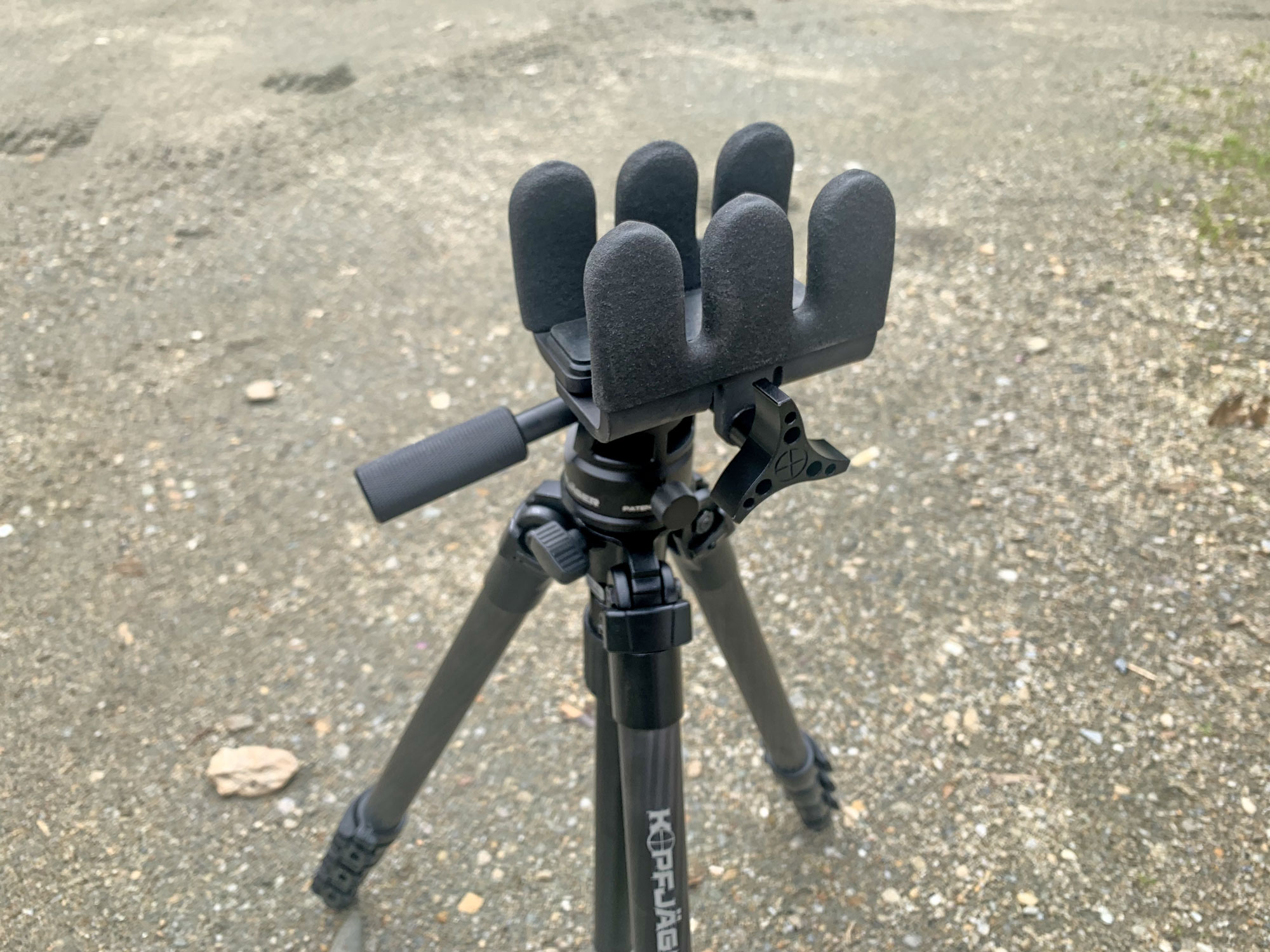
These tripod heads work well with a wide variety of rifles and don’t require special hardware or adapters on the rifle. They simply grab it and hold it securely. It’s a great option for the everyday hunter, and a useful tool for teaching young or new shooters. The BOG Deathgrip is probably the most well-known commercial example of this, but the Kopfjager with Reaper Grip is also popular. If you already have a tripod, there are many affordable HOG Saddle style heads that you can try out.
Swiss ARCA Shooting Tripod
The most popular shooting tripods usually have a Swiss ARCA ball head. This allows for some overlap with other shooting tripod systems like the HOG Saddle or a tac table, because some of those mount directly to an ARCA head, but many shooters use the ARCA system to clip their rifle directly onto the tripod. Many rifle chassis now include an integral ARCA rail, and you can even get an ARCA rail handguard for your AR or Ruger precision rifle. Even lightweight mountain rifles like the Bergara Premier MG Lite and Seekins Havak Slam featured in our 2024 Rifle Test incorporate small bits of ARCA rail to clamp right into a tripod. Even on a lightweight tripod in the mountains, this provides incredible stability.
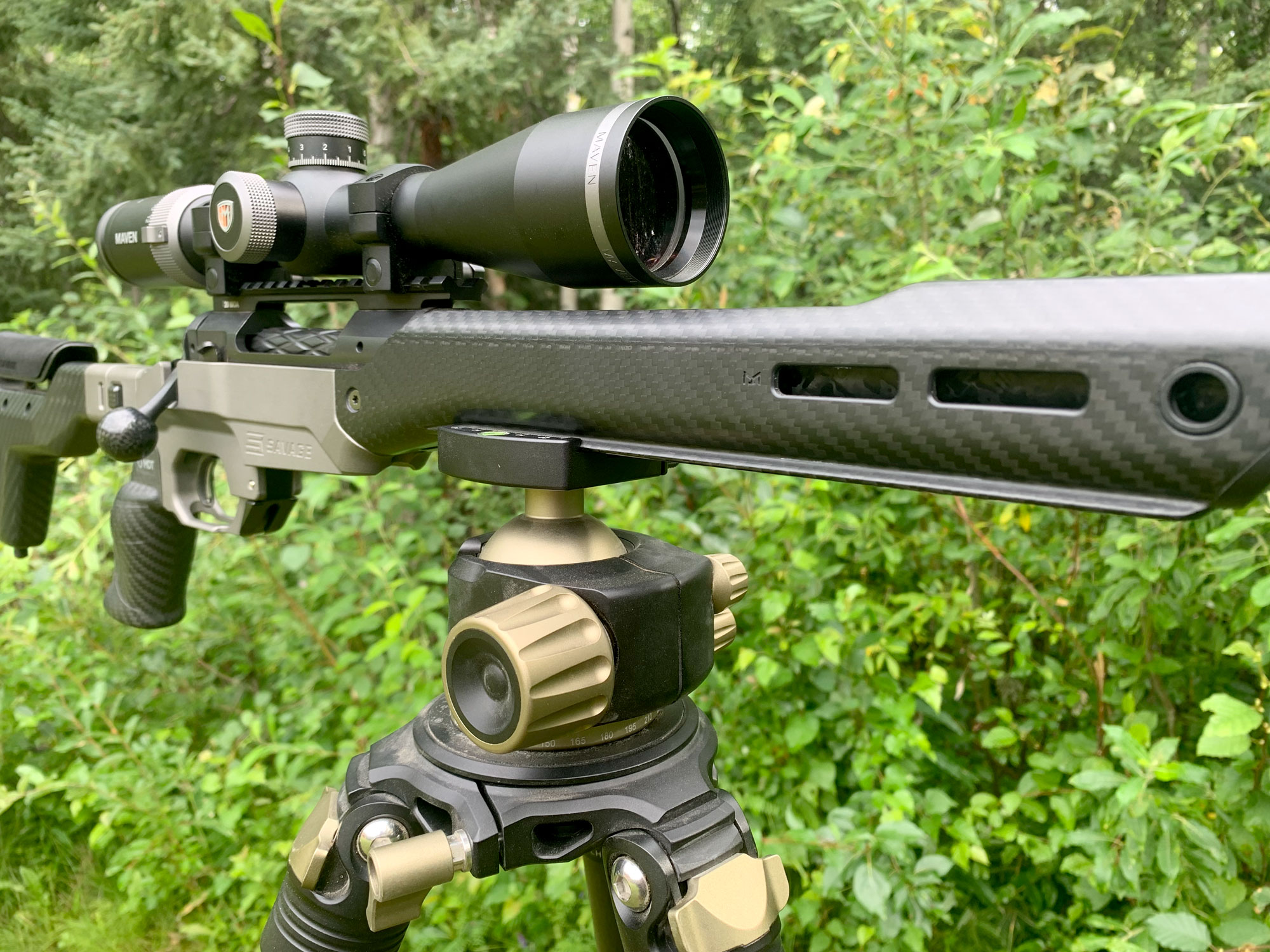
The ARCA mounting system — which is standard for camera equipment — is well supported and since it’s compatible with other accessories, makes for the most versatile shooting tripod.
The Shooting-Tripod Tac Table
One of the most popular shooting tripod accessories for your ARCA setup is a tac table. You can buy these in many different styles, and materials. You can even make one out of a plastic cutting board for less than $20. A tac table is essentially just a small flat table that mounts to the top of your tripod, usually with a piece of ARCA rail. These are commonly used by competitive shooters, but tac tables are also useful for hunting because you can set a small shooting bag on top of the table for a solid rest for shooting or glassing, but you can use the table for a rear support when shooting from a standing position.
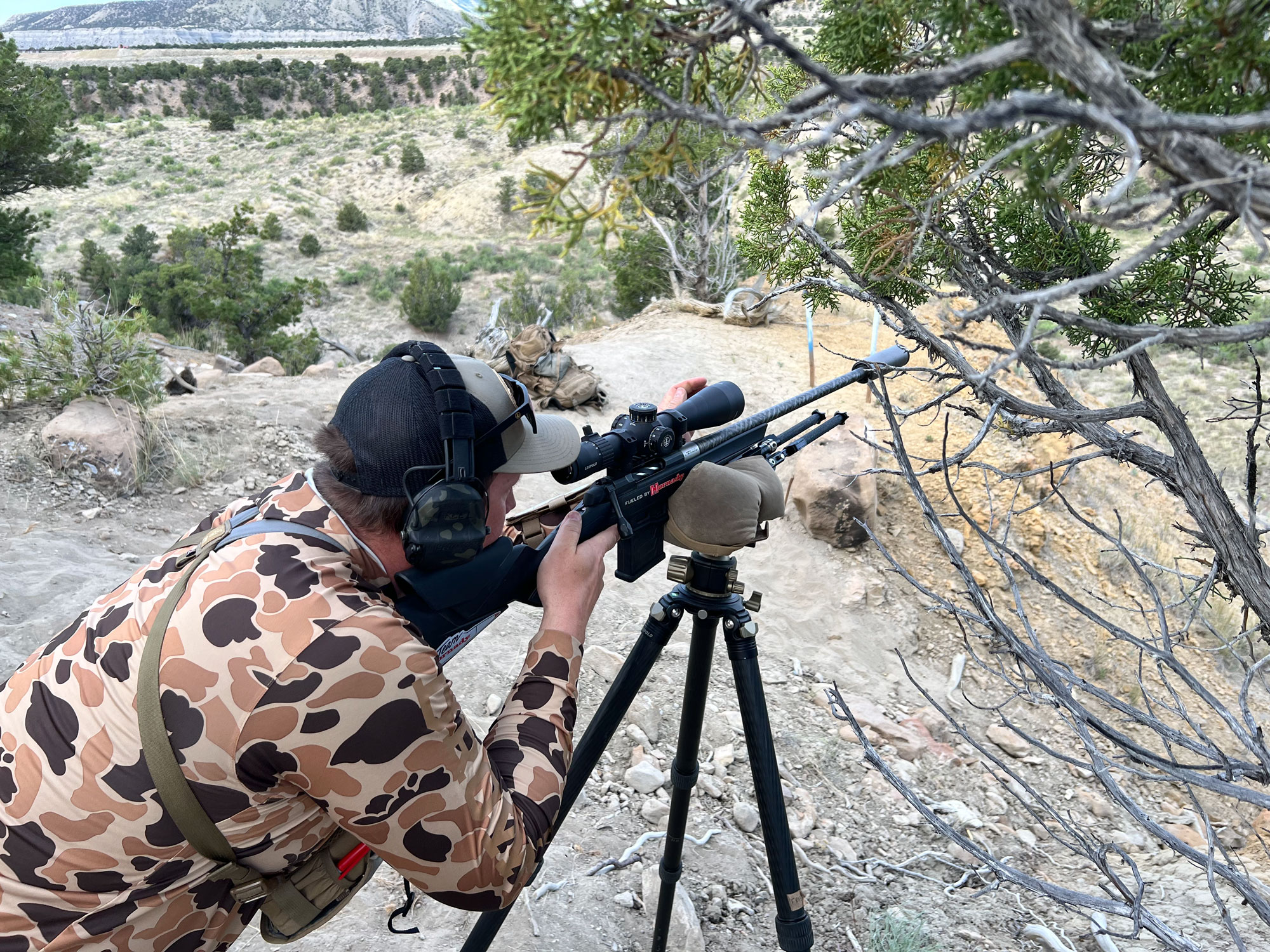
The Spartan System Shooting Tripod
A third common style of shooting tripod, and brainchild of our British friend Rob Gearing, is the magnetic post and socket system that’s the basis for Spartan Precision Equipment. The company prides itself on thoughtful, multi-use designs and excellent materials. Their product line has become a cult favorite among North American mountain hunters for their lightweight Javelin bipods. They also have a number of lightweight and heavy-duty shooting tripods, too. The Spartan shooting tripod system is built around a small magnetic post that fits into a socket on the rifle. These sockets are either attached in place of the sling swivel stud, clamped onto a piece of Picatinny rail, or embedded permanently into the stock. Some stocks like what we saw on the Savage Klym, include the adapter, and it’s offered as a rail option on the new Rokstock from Unknown Munitions.
One plus of this system is that it’s quick and requires no clamping. Simply drop the socket onto the magnetic post and it’s connected. I really like the Ascent tripod for packing into the mountains after sheep, because another nice perk is that the legs are designed to be removed and be used as trekking poles. I can vouch for their toughness in that application. If you’ve already got a tripod, you can simply buy a Davros ball head if you’re looking to try this system out at a lower cost.

Using a Shooting Tripod for Hunting
At first, the thought of lugging a tripod around might seem outlandish to most hunters. It’s not so strange to mountain hunters who are already using a tripod for glassing, but everyone else might be harder to convince.
With some good instruction on how to shoot off a tripod and a bit of practice, though, you will be surprised at just how effective they are. I recently shot my first NRL Hunter match and after a couple weeks of training, I could reliably hit 1.5-MOA targets from a standing position out to 600 yards. That level of confidence and stability makes normal hunting distances feel like chip shots.
Some of Our Favorite Shooting Tripods
Picking a shooting tripod depends a lot on your personal taste (and your budget), but here are some of our favorites:
Really Right Stuff TFCT MK2
- Material: Carbon fiber
- Height range: 24.6 inches to 71.1 inches
- System: ARCA ball head
- Price: $1,670
BOG Deathgrip Carbon Fiber
- Material: Carbon fiber
- Height Range: 7 inches to 59 inches
- System: HOG Saddle-style clamp
- Price: $258
Kopfjager with Reaper Head
- Material: Carbon fiber
- Height Range: 19.75 inches to 64 inches
- System: Rifle clamp
- Price: $600
Leupold Mark 5 CF 455
- Material: Carbon fiber
- Height Range: 8.3 inches to 74 inches
- System: ARCA ball head
- Price: $1,204
Spartan Precision Ascent
- Material: Carbon fiber
- Height Range: 11 inches to 50 inches
- System: Spartan magnetic post/socket
- Price: $1,100
Frequently Asked Questions About Shooting Tripods
The best shooting tripod for hunting depends on your application. Larger tripods offer more stability but aren’t as easy to carry around. The most versatile tripod is one with a Swiss ARCA head that can be used with other accessories.
Ideally, a shooting tripod should be tall enough to allow you to shoot from a standing position in uneven terrain. But if you need a shorter tripod, you should be able to shoot from a sitting or kneeling position. Otherwise, you don’t gain much over a bipod.
Most Army and other military snipers are using top-end tripods from Really Right Stuff.
Final Thoughts on Shooting Tripods
There is no perfect all-around tool that fits every hunting or shooting scenario. But a good shooting tripod is one of the most valuable pieces of equipment you can get. Tripods provide unmatched stability in almost any terrain. They can be used as a primary support or as a supplemental aid when building shooting positions. Developing the skills to use a shooting tripod will undeniably make you a more effective shooter whether for hunting, competing, or shooting for fun.


